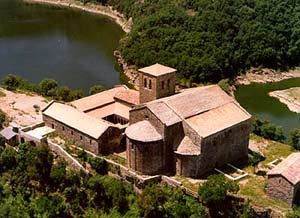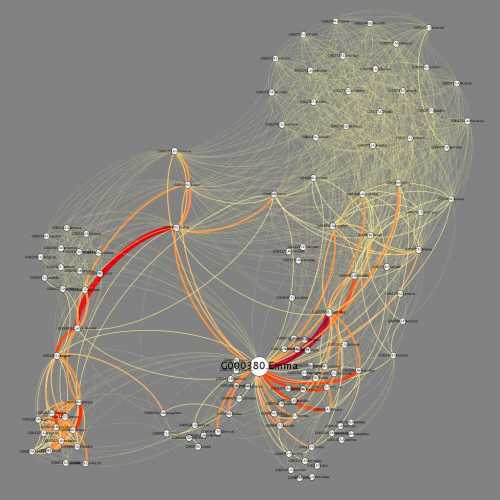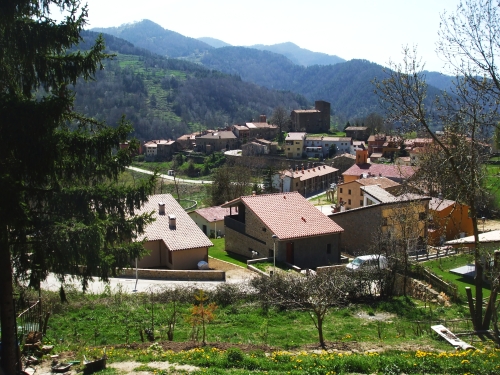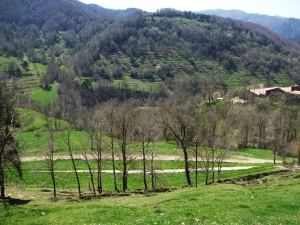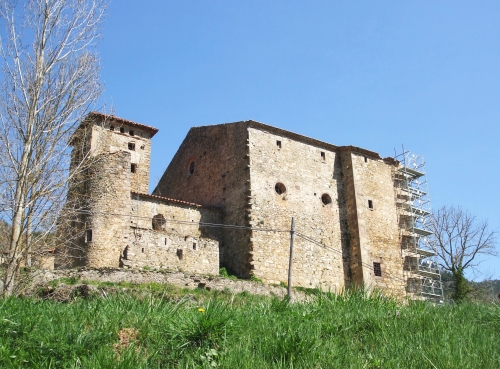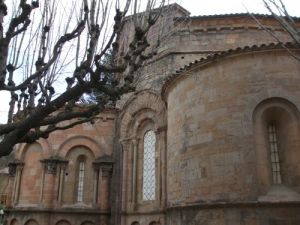This post was delayed by the time it took my copies of my previous publication to arrive, because my obsessive sense of chronology demanded that I do them in the order they came out. But even at the time I posted my last publication news there was already another in the queue, and in fact had been since December 2019—that different world, when there was no global pandemic and people were still hoping Britain would somehow stay in the European Union—when, from that very international bloc and specifically from Barcelona, this arrived in my hands.

Cover of Irene Brugués, Coloma Boada & Xavier Costa (edd.), El Monestir de Sant Joan: Primer cenobi femení dels comtats catalans (887-1017) (Barcelona 2019). You may recognise the cover image…
The significant name for me in this story is the third one on that cover, that of Xavier Costa, who will enter our backlogged story next post but, in the short version, was at Leeds for a term in early 2017 and thus found out (more) about my work. Then, in October of that year there was a conference at Sant Joan de les Abadesses, a town that bears its name because of the nunnery that was established there by Count Guifré the Hairy, and about which I wrote my first ever article and a decent part of my first book.1 I found out about this a little while later, when one of the participants got in touch asking for a copy of what would become my Traditio article, and I was sorry not to have been invited—there was no budget for international travel, I later found out—but was intrigued to know that new work was being done on the abbey.2 But although I had not been able to go to the conference, Xavier being one of the editors meant that I did get invited to contribute to the resulting book, which meant an awful lot to me as it was almost my first recognition from the Catalan academy. At first, being given carte blanche, I offered something that turned out to be almost exactly what Xavier had been intending to write, but when that became clear I instead offered to take over a chapter about the establishment of the nunnery for which they had no author assigned.
Now, this was not as easy as it might have been. You might think I could just have reprised my older work, but in the first place there was newer work to take into account, in the second place I’d changed my mind about some of the issues and most of all, this meant writing about Guifré the Hairy and his establishment of power in Osona, a subject on which I had previously written probably a paragraph at most and that not very well thought out.3 It’s not as simple as it seems, because as far as we can tell no-one had given Guifré rights over the county of Osona, which had been out of Carolingian control for fifty years when he succeeded to Barcelona, and why communities there should have engaged with him is not actually clear if you don’t start from the position that a nation was there waiting to be formed. This is, though, the same problem to which I devoted a tangled series of blog posts a few years back, which then turned into an article that was nearly lost, and that meant that I did myself now have a theory about how he might have done this, which to my delight seemed to fit.4 And with that realised, suddenly this became much easier to write…

Title page of Jonathan Jarrett, ‘La fundació de Sant Joan en el context de l’establiment dels comtats catalans’, in Brugués, Boada & Costa, El monestir de Sant Joan, pp. 83-107
I got to write it in English, thankfully, but thanks again to the good offices of Xavier Costa it has been published in really quite stylish Catalan, which is another first for me.5 I got to see one or two of the other chapters in draft, so could take account of them, but with others there are inevitable differences of opinion and interpretation. Well, that is the nature of scholarship and I hope that even though I have not met all of my fellow contributors we will still be able to talk about those differences some day in the future, maybe even back at Sant Joan. Until then, here is a volume that is the state of our understanding about the place and its importance in the formative period of Catalan history, in which I’m very proud to appear, alongside some expert company. Thankyou Xavier, the other editors and the Abadia de Montserrat!
1. Jonathan Jarrett, “Power over Past and Future: Abbess Emma and the nunnery of Sant Joan de les Abadesses” in Early Medieval Europe Vol. 12 (2004 for 2003), pp. 229–258, DOI: 10.1111/j.0963-9462.2004.00128.x; idem, Rulers and Ruled in Frontier Catalonia, 880-1010: Pathways of Power (Woodbridge 2010), pp. 23-72.
2. That article, in case you had forgotten, being Jarrett, “Nuns, Signatures, and Literacy in late-Carolingian Catalonia” in Traditio Vol. 74 (Cambridge 2019), pp. 125–152, DOI: 10.1017/tdo.2019.7.
3. The newer work mainly being Antoni Pladevall, “El monestir de Sant Joan, del cenobi benedictí femení a canònica clerical” in Marta Crispi and Miriam Montraveta (edd.), El monestir de Sant Joan de les Abadesses (Sant Joan de les Abadesses 2012), pp. 18–37 and Martí Aurell i Cardona, “Emma, primera abadessa de Sant Joan de les Abadesses”, ibid., pp. 38–45, neither of which had noticed Jarrett, “Power over Past and Future”, but also Manuel Riu, “Església i poder comtal al territori d’Urgell: Guifré el Pilós i la reorganització de la Vall de Lord” in Anuario de Estudios Medievales Vol. 29 (Barcelona 1999), pp. 875–898, online here, and Ramon Ordeig i Mata, “Cel·les monàstiques vinculades a Guifré el Pelós i a la seva obra repobladora (vers 871-897)”, edd. S. Claramunt and A. Riera, in Acta Historica et Archaeologica Mediaevalia Vol. 22 (Barcelona 2001), pp. 89–119, online here, both of which I’d shamefully missed in my own earlier work because, I know it’s hard to believe, but back then most journals weren’t online! Current issues of Catalan stuff were really hard to get in the UK even in 2007, when my book manuscript was sent off. Doubtless Drs Pladevall and Aurell could say something similar about my stuff.
4. That article being Jonathan Jarrett, “Engaging Élites: counts, capital and frontier communities in the ninth and tenth centuries, in Catalonia and elsewhere” in Networks and Neighbours Vol. 2 (2014), pp. 202–230, online here.
5. Citation therefore being Jonathan Jarrett, “La fundació de Sant Joan en el context de l’establiment dels comtats catalans” in Irene Brugués, Coloma Boada and Xavier Costa (edd.), El monestir de Sant Joan: Primer cenobi femen&icute; dels comtats catalans (887-1017) (Barcelona 2019), pp. 83–107.


